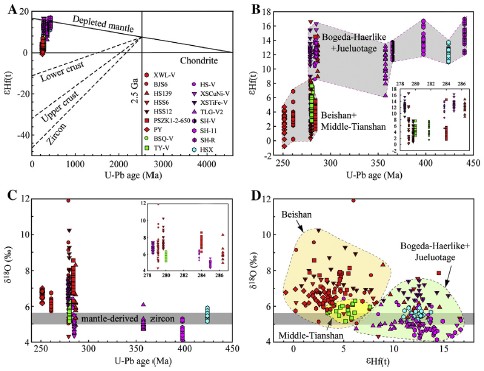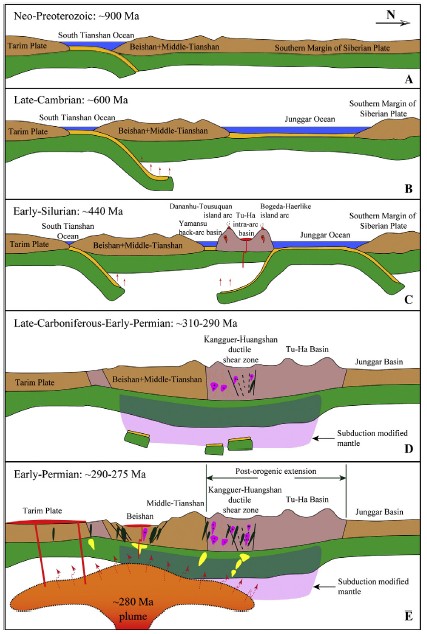Postdoctor XU Benxun and his teacher QIN Kezhang present, for the first time, U–Pb ages and Hf–O isotopic data of zircons from mafic–ultramafic complexes and related volcanic rocks and granites in the Eastern Tianshan and Beishan Rift, and place spatial and temporal constraints on their tectonic evolution and mantle plume event.
The Hf model ages of the analyzed zircons, together with the regional geology suggest that the Beishan area had a northward subduction, possibly fromca. 900 Ma to ca. 400 Ma,whereas the Eastern Tianshan had a south-directed subductionmost likely fromca. 600 Ma to ca. 310 Ma. Additionally, zircons with ca. 280 Ma U–Pb ages display wider and more scattered εHf(t) and δ18O variations than the relatively older and younger ones, which further support the Early Permian mantle plume model.

Fig.1 Correlation diagrams of zircon Hf–O isotopes vs. U–Pb ages of the Eastern Tianshan and Beishan mafic–ultramafic complexes and their related igneous rocks. (Image by SU)

Fig. 2. Tectonic evolution model for the Eastern Tianshan and Beishan regions. (Image by SU)
Su et al. U–Pb ages and Hf–O isotopes of zircons from Late Paleozoic mafic–ultramafic units in the southern Central Asian Orogenic Belt: Tectonic implications and evidence for an Early-Permian mantle plume. Gondwana Research, 2011, 20(2-3): 516-531 (Download Here)